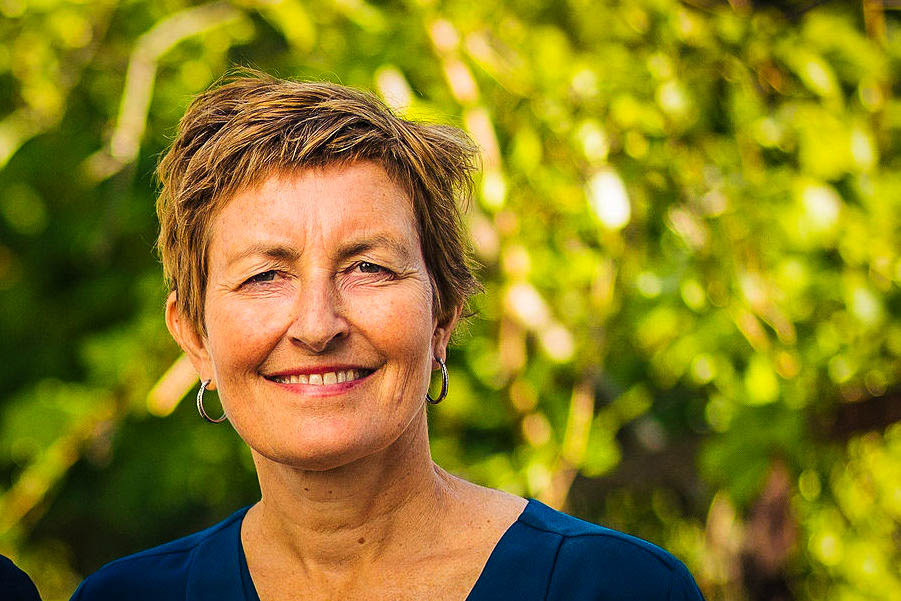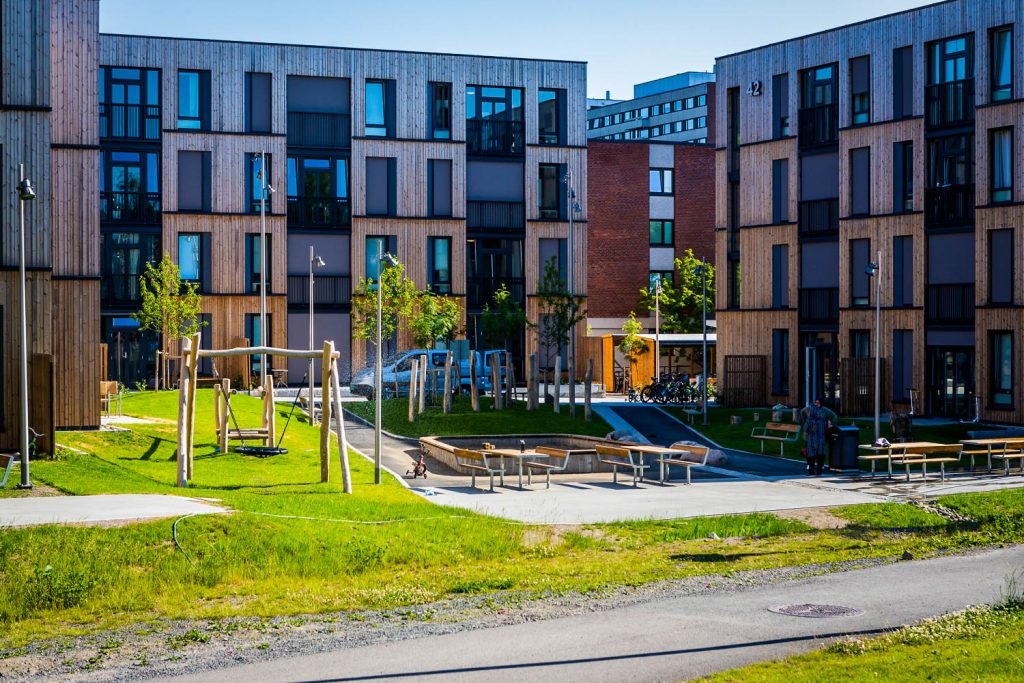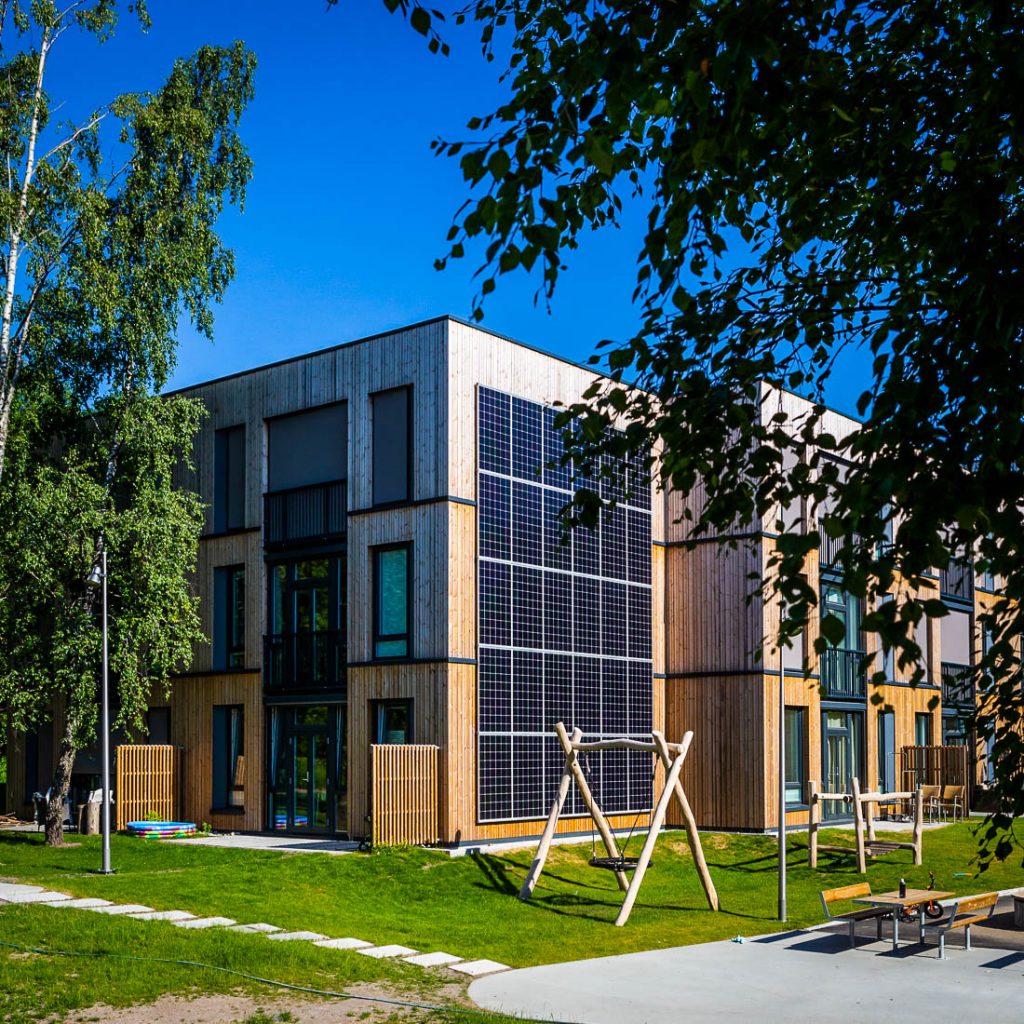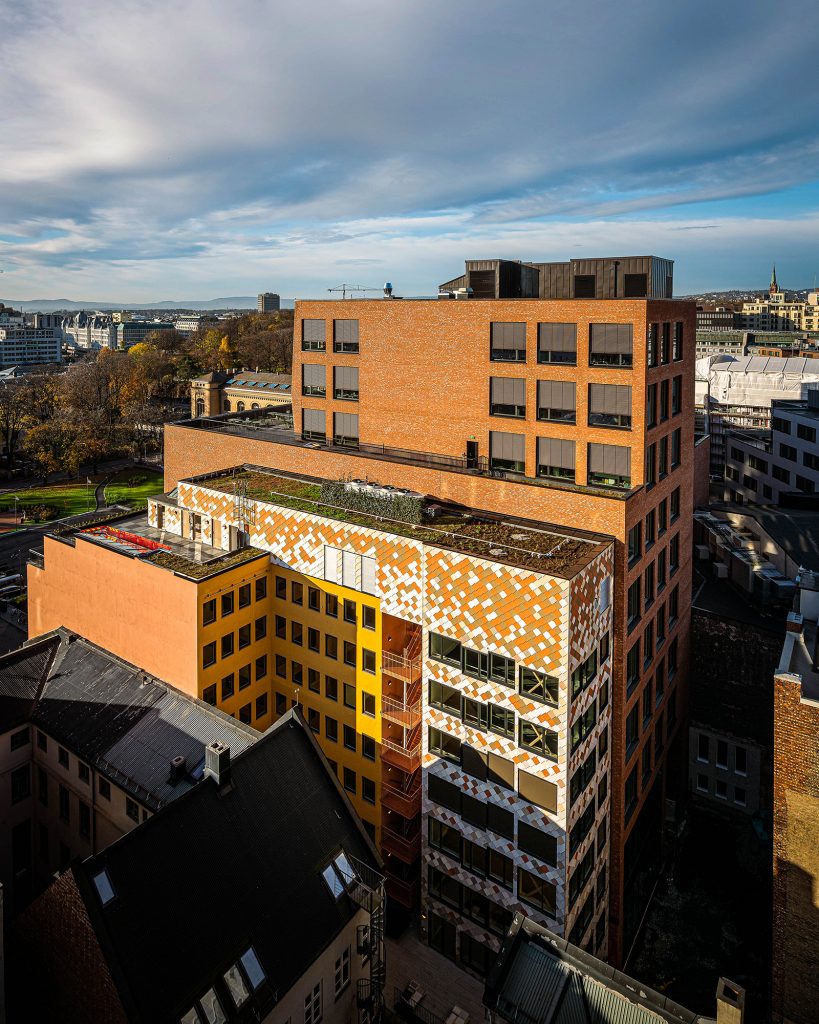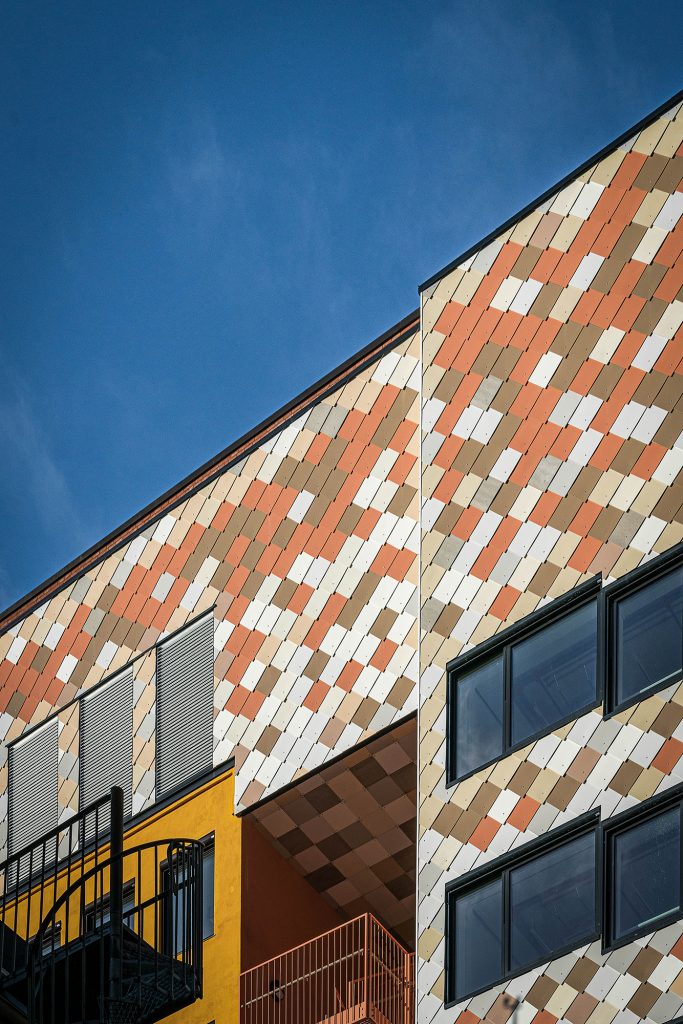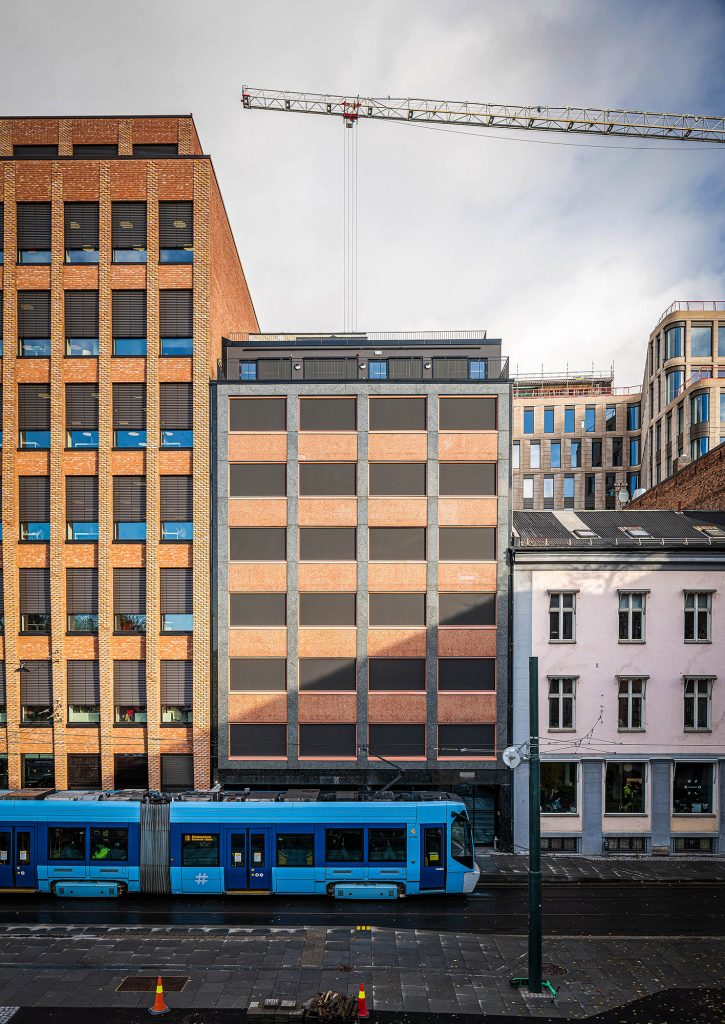Making your city’s buildings sustainable is a big aspiration and not easy. However, one thing that definitely helps are powerful examples of architecture that showcase the immense possibilities this field holds. One expert for these examples is CityChanger Birgit Rusten, who talked with us about sustainable architecture, public buildings, and the Norwegian programme FutureBuilt.
Birgit Rusten is the programme manager and co-founder of FutureBuilt, a programme originally running from 2010 – 2020 and now prolonged until 2030, that develops carbon-neutral urban areas with high-quality architecture in the Oslo region. Her interest in architecture, however, did not come from being an architect. She is originally educated as a biologist but has worked with different aspects of the sustainability field her whole career.
When working in Oslo and with different kinds of organisations for many Norwegian municipalities, Birgit was able to explore quite a broad field of sustainability issues. “In 2003, the national association of Norwegian architects was going to hire a person working with sustainability projects, and well, I applied and got the job. Then I stumbled into the big world of architecture.”
It was a field that brought Birgit new inspiration to fight for sustainability. With sustainable architecture, your achievements are visible. After working in the field with many architects and developers for a couple of years, she and her colleague Stein Stoknes initiated FutureBuilt – something Birgit is sure she can do for the rest of her career “because there’s so much to do and it’s incredibly interesting.”
FutureBuilt – A Programme That Inspires
Started From the Bottom – Now We’re Here
FutureBuilt started when Birgit was working in the National Association of Norwegian architects. In 2003, she worked within a pilot programme for more sustainable architecture: “After we worked with this for a few years, we thought ‘Well, why don’t we take this idea of working with pilot projects into the capital of Norway?’”, Birgit recalls. With climate issues covered more widely in the media, Birgit and her colleague took the momentum and created a programme dedicated to sustainable architecture that became FutureBuilt in 2009.
First getting in contact with Oslo and a smaller municipality, they later gathered partners like the Norwegian Green Building Council and the Norwegian State Housing Bank. As a result of these fruitful co-operations and the successful work put out, “after a couple of years, two other municipalities knocked on the door and asked if they could join the programme”.
Now, FutureBuilt is a programme owned by the six different municipal authorities – Oslo, Bærum, Asker, Drammen, Nordre Follo, and Lillestrøm.
After 10 years of hard, inspirational, and ambitious work, as of February 2021, FutureBuilt concluded 56 pilot projects. Check out their book FutureBuilt 10 years to see what has been done in 10 years.
The Work Explained
FutureBuilt itself is a collaboration between municipalities and other partners. The aim is to support urban climate-friendly development in the Oslo region. The initial goal was to complete 50 pilot projects by 2020. The pilot projects are realized by public or private developers.
Through these pilots, the importance of sustainable architecture is showcased as the programme shows examples that inspire and change the way we develop our cities. For that, quality criteria have been set up by the programme that applicants have to fulfil in order to become a FutureBuilt project.
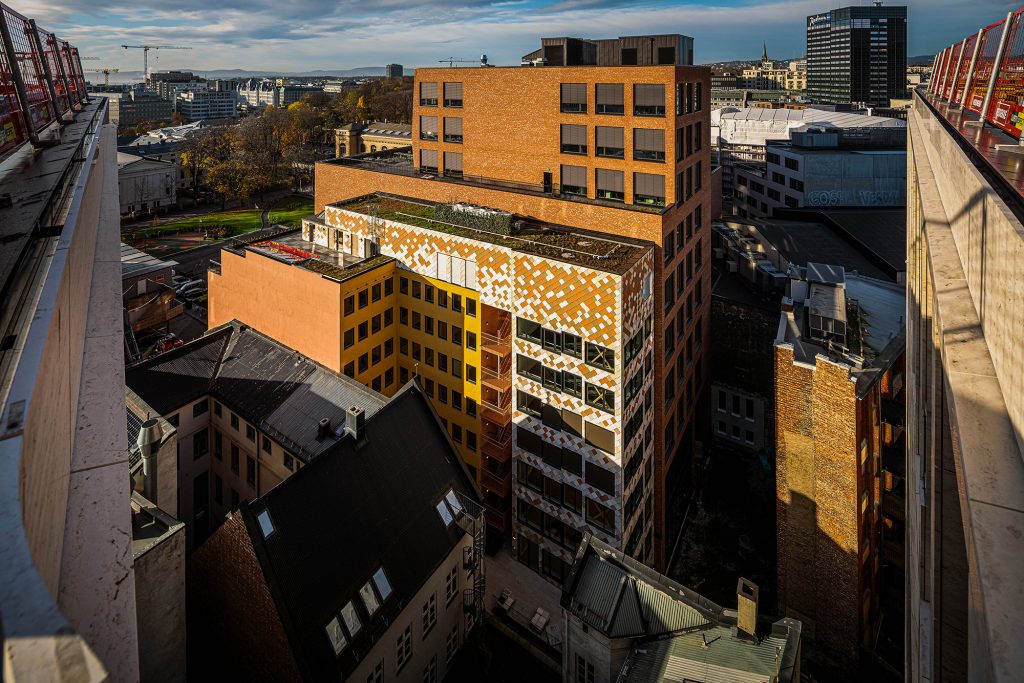
The overall criterion is to reduce the carbon footprint by 50 per cent compared to current regulations. Additionally, the projects have to lower greenhouse gas emissions and need to be of high architectural quality with an incentive to be innovative. In 2017, the programme adopted fossil-free construction sites as a minimum criterion as well to achieve emission-free sites.
With FutureBuilt, buildings are being constructed that serve as contagiously inspiring examples and role models others can follow.
The Challenge of Too Much Ambition
With a programme where several architectural projects are being implemented on a large scale, challenges are bound to exist. FutureBuilt has some developers really keen on joining the programme, but when it comes to detailing the project, they might find the ambitions difficult to fulfil. This means that some buildings do not become so interesting or as good as initially hoped. Maybe they have high environmental standards but still do not have much to demonstrate to the public in the end.
Some pilot projects want to go beyond the regulations of the city when it comes to height and density. In the process with the planning authorities, it is not obvious that they can put more building mass on their site because of it being a pilot project. They do also have to deliver on height quality when it comes to architecture and urban space.
Hence, Birgit and her team just changed their process for accepting projects. Instead of being signed from the beginning, they become preliminary FutureBuilt candidates. “We are not signing the formal agreement before they are through the planning process.”
“We realised that having a very sustainable building doesn’t mean that you can break the overall rules for the area. If it isn’t good for the city, then people actually don’t think it’s good enough.”
Despite having turned down some big developers and their high-profile projects, as they hit the wall in the city administration, many candidates of FutureBuilt are still trying to push borders. “But now they know that they are in the programme preliminarily, and we can help with the process. It’s actually very important for us to be there in the early phase of planning before all the targets are set.”
Good Examples
One of Birgit’s favourite completed projects is the Kringsjå student family houses, three single-storey buildings with flats for student families. They are made out of wood and comply with plus energy standards (a building that generates more energy than it needs). These buildings are equipped with solar panels and for greywater recycling and local geothermal heating. “Student housing has to be realized within a very limited cost-frame, and that is why it is so cool that they still can make it so sustainable and climate-friendly”, explains Birgit.
Second, FutureBuilt was also part of the rehabilitation of Kristian August gate 23, an office building built in 1950. Now, 50 per cent of the original materials and building parts are being reused. According to Birgit, making the building circular has reduced its carbon footprint from the embodied energy (materials) by 70%. The building has green roofs planted with local species to improve the biological diversity in Oslo.
FutureBuilt was also part of the new Oslo public library, completed in 2019. The building with ambitious environmental strategies not only reduced emissions by 69.8% but is designed to be a meeting hub for the capital’s community, with a cinema, restaurants, and offices included in the building.
Future Vision of FutureBuilt
Talking to Birgit, her passion for FutureBuilt makes one thing is clear: she is ambitious. And, as the FutureBuilt programme was extended for another 10 years, the sky is the limit! “We have increased the scope. For the next 10 years, there is still a lot of innovation going to happen on the buildings level, but we’ll also work with bigger city areas.”
One project, for instance, will focus on turning a harbour area in Oslo into a mixed-use area with a lot of housing. “There, we’ll work to see how overall structures are contributing to a lack of sustainability.” Additionally, all FutureBuilt pilot projects now have to address social sustainability and work with biodiversity, incorporating “how you can bring nature into the area and how you can have local water treatments to help the climate”.
“We’re really changing from being energy, material, and mobility-focused to now also nature, water management, social sustainability, and circularity focused.”
Ten years is a long time, but the time invested is now proven even more beneficial: with the immense amount of experience Birgit and her team have gathered, future implementations of sustainable architecture will come more easily.
Birgit hopes for the programme to be a learning arena for cities everywhere. “Because the big goal is actually to not only work with pilots in the Oslo region but to actually improve all the construction business and city developments.”
Advice for Other CityChangers
Birgit has one main piece of advice, and the magic word, unsurprisingly, is pilot projects. “There is very great power in a good example. Instead of guessing, just start doing it, set some high environmental targets on the few buildings that the city is responsible for.”
“You can start with 10 kindergartens, for instance. They’re quite small and not very complex. See what you learn and then put your experiences into other projects.” Again, architecture is tangible, you can touch it, and in Birgit’s opinion, politicians love the projects where “you can touch them, they are not just these numbers that you don’t understand. You can see that this building has kept the carbon footprint low. It’s a good story”.
Moreover, in FutureBuilt’s experience, “it’s good to have a programme that is working with both private and public developers over a period of time and be a kind of facilitator organisation.”
We are excited about what FutureBuilt’s next projects have in store for us. In the meantime, check out our article about Oslo to see how much the Norwegian capital has changed for the better.

